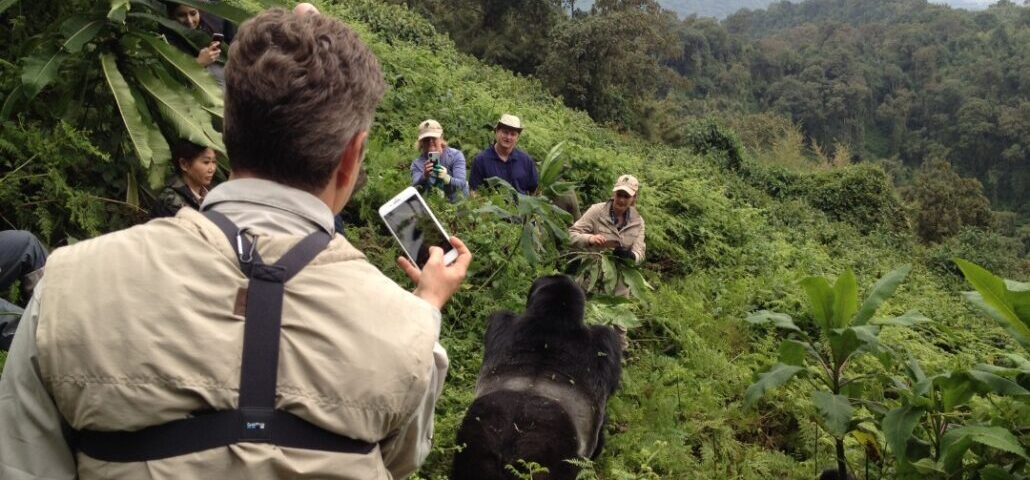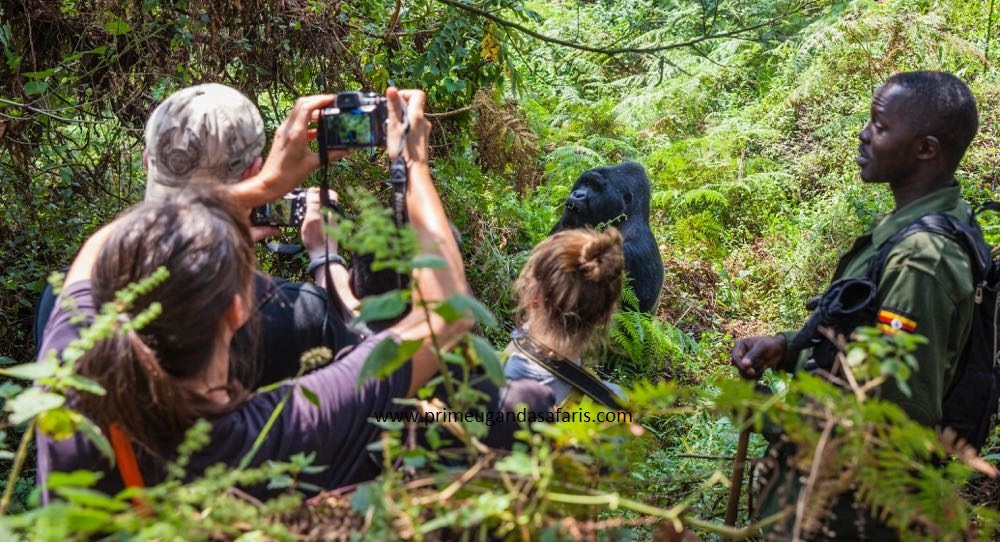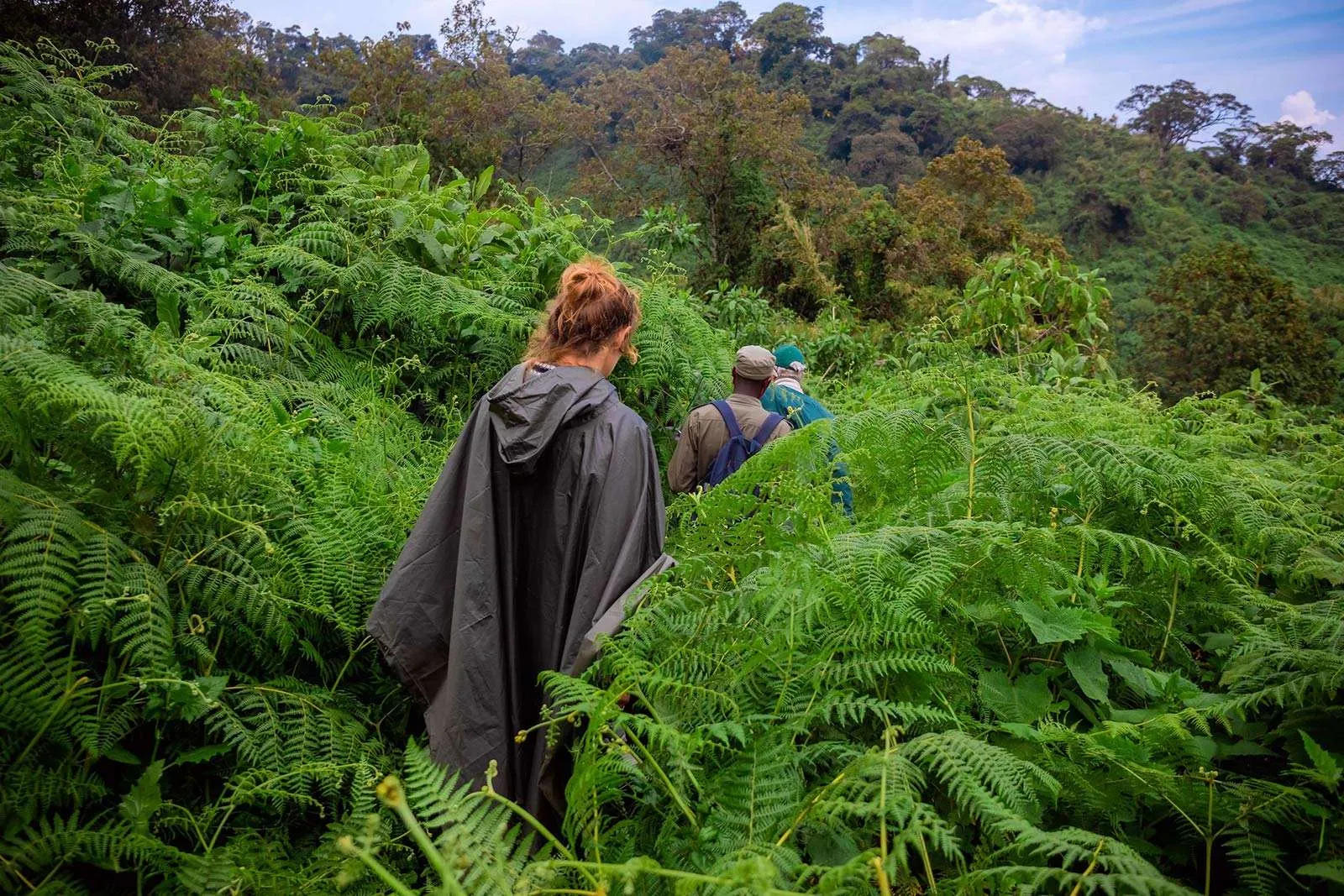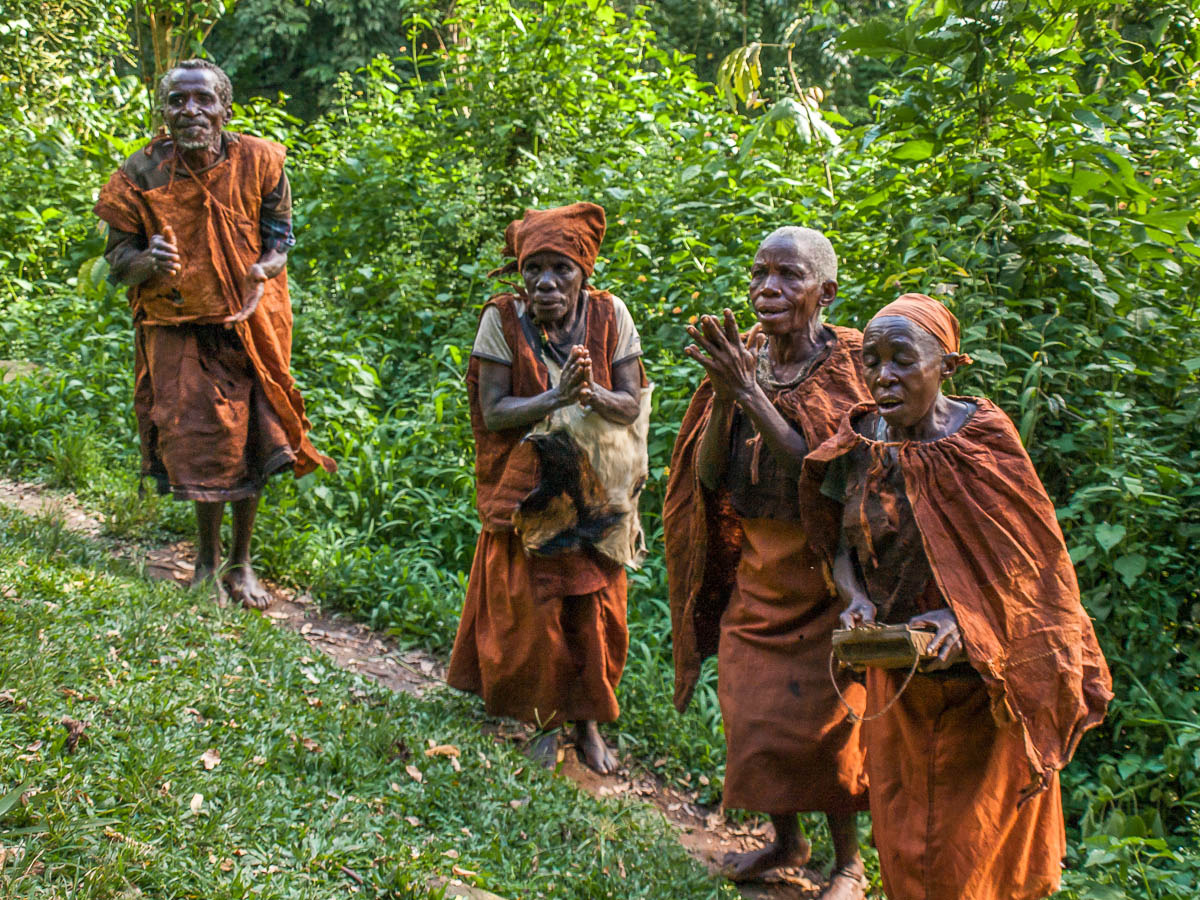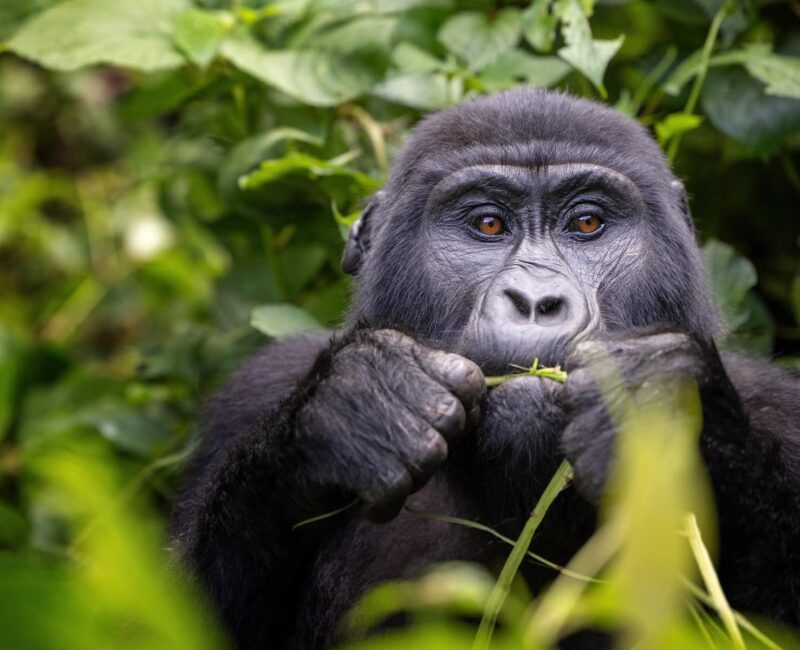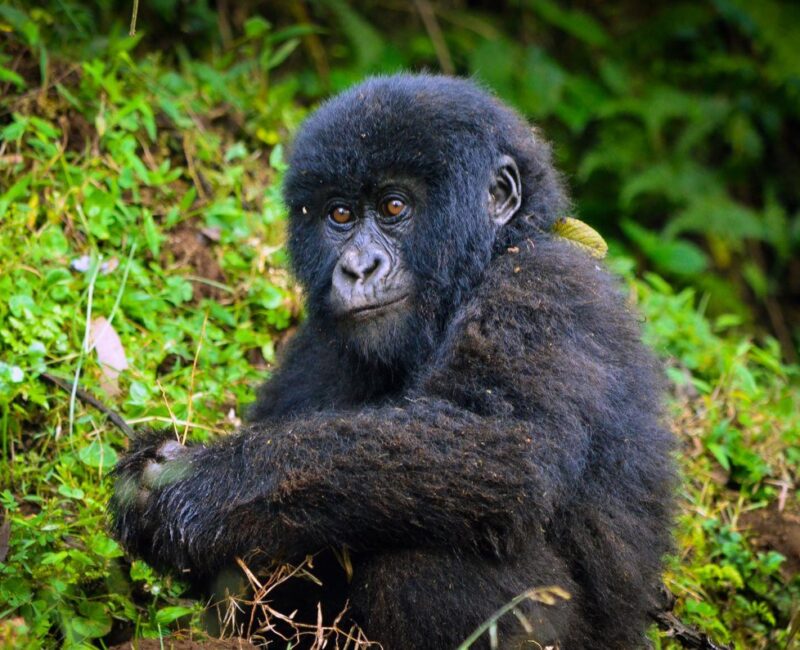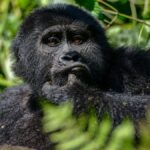
Understanding Gorilla Behavior During the Trekking Experience
September 23, 2025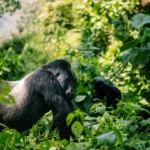
The Safety Of Gorilla Trekking In Uganda
September 24, 2025How to Prepare for Gorilla Trekking : The Ultimate Safari Guide
Gorilla trekking in Uganda is one of the most extraordinary wildlife experiences on the planet. The dense rainforests of Bwindi Impenetrable National Park and Mgahinga Gorilla National Park host mountain gorillas in their natural habitats, offering travelers unforgettable encounters during Uganda Gorilla Safaris. To maximize enjoyment and ensure safety, proper preparation is essential. Knowing what gear to bring, how to condition your body, and what health precautions to take enhances the safari experience. Proper preparation not only improves comfort but also supports ethical wildlife tourism, making Uganda Gorilla Trekking a safe, memorable, and responsible adventure.
Uganda’s gorilla trekking is central to many Uganda Safari Holidays and Uganda Wildlife Safaris. Visitors combine treks with chimpanzee trekking, birdwatching, and cultural immersion in nearby communities. Local lodges provide convenient access to trekking routes while offering opportunities to experience Ugandan culture, including traditional music, dance, crafts, and culinary experiences. Understanding preparation tips is vital for travelers of all ages, whether first-timers or experienced wildlife enthusiasts. Questions like what should I pack for a gorilla trek? or how do I physically prepare for Uganda Gorilla Safaris? are answered comprehensively in this guide.
Physical Preparation for Gorilla Trekking
Gorilla trekking in Uganda can be physically demanding. Forest trails are steep, muddy, and often slippery, requiring stamina, strength, and endurance. Improving fitness several months before your trip is crucial. Engage in light to moderate cardiovascular exercise, such as jogging, hiking, or cycling, to build lung capacity and leg strength. Core and leg exercises help with stability on uneven terrain. Conditioning prepares participants for the challenging one- to four-hour hikes and allows full enjoyment of the Uganda Gorilla Trekking experience.
During the trek, pacing is essential. A steady, manageable pace with intermittent breaks helps conserve energy and prevent fatigue. Staying hydrated is critical; carrying at least two liters of water ensures optimal performance and reduces the risk of dehydration. Hiring a local porter can greatly enhance comfort and efficiency. Porters assist in carrying backpacks, walking sticks, and other gear, allowing visitors to focus on the wildlife and forest surroundings. This guidance is especially valuable for travelers incorporating Uganda Wildlife Tours into broader safari itineraries, ensuring a balance of physical activity, observation, and enjoyment.
Essential Clothing and Gear
Proper clothing and gear are vital for comfort and safety during Uganda Gorilla Trekking. The rainforest environment is humid, muddy, and unpredictable. Long-sleeved shirts and long trousers protect against thorns, scratches, and insect bites. Durable, waterproof hiking boots with excellent ankle support are recommended for navigating slippery or uneven forest trails. Gloves, preferably lightweight gardening gloves, protect hands while gripping vegetation or stabilizing on steep inclines. Tucking trousers into socks prevents insects, such as safari ants, from crawling up legs.
Rain gear is indispensable. Lightweight, waterproof jackets or ponchos shield against sudden downpours, common in Uganda’s rainforest regions. Layering with warm clothing ensures comfort during early morning departures and cooler forest temperatures. Clothing colors should be subdued—avoid bright hues that may alarm gorillas and dark shades that attract tsetse flies. This practical approach ensures that participants remain safe, comfortable, and minimally intrusive to wildlife, supporting ethical tourism practices during Uganda Gorilla Safaris.
Packing List for a Successful Gorilla Trek
Packing thoughtfully enhances both comfort and safety during a gorilla trek. Water is essential; carrying a reusable bottle and a minimum of two liters per person is recommended. Energy-rich snacks such as bananas, nuts, or biscuits provide fuel during long hikes. High-DEET insect repellents protect against mosquitoes and other biting insects prevalent in forested areas. A basic first-aid kit containing antiseptic wipes, bandages, plasters, and pain relief ensures preparedness for minor injuries.
Photography enthusiasts should bring cameras with extra batteries and memory cards. Avoid using flash to prevent startling gorillas. Binoculars enhance viewing of other wildlife, including birds, duikers, and monkeys that inhabit the forest. Travelers can also include trekking poles for balance and comfort on steep trails. By preparing a comprehensive gear list, participants maximize their enjoyment during Uganda Gorilla Trekking and other Uganda Wildlife Safaris, ensuring a safe, efficient, and memorable experience.
Health Precautions and Medical Preparation
Before embarking on a gorilla trek, visitors should consult a healthcare provider regarding necessary vaccinations and preventive medications. Yellow fever vaccination is commonly required, and anti-malarial medications may be recommended for protection against mosquito-borne diseases. Wearing masks during close encounters protects gorillas from human-borne illnesses, such as respiratory infections. Hygiene practices, including hand sanitization and avoiding touching wildlife, are essential.
Proper medical preparation ensures that tourists remain healthy throughout their Uganda Safari Holiday and that gorillas are not exposed to human pathogens. These precautions are particularly important during multi-day Uganda Wildlife Tours, which may include trekking, cultural village visits, and other wildlife experiences. Travelers often ask, how do I stay safe and healthy while trekking gorillas? Following these health guidelines protects both humans and wildlife, supporting responsible tourism and conservation efforts.
Guidelines for Observing Gorillas Safely
During Uganda Gorilla Trekking, maintaining a respectful distance is critical. Visitors should remain at least 7 meters (21 feet) from gorillas to minimize stress and prevent disease transmission. Silence and calm movement allow gorillas to behave naturally, providing a more authentic observation experience. Avoid direct eye contact, as this may be perceived as a threat, and refrain from initiating physical contact under any circumstances.
Flash photography should never be used, as sudden bright light can agitate gorillas. If a gorilla charges, crouching calmly demonstrates non-aggression, and the animal typically retreats. Rangers guide visitors carefully, ensuring both safety and minimal disturbance. Adhering to these rules supports ethical wildlife tourism during Uganda Gorilla Safaris and ensures unforgettable, safe encounters for all participants.
Cultural Experiences Around Gorilla Trekking Lodges
Lodges near gorilla trekking routes offer immersive cultural experiences alongside wildlife observation. Visitors can explore nearby villages, participate in traditional Ugandan dances, and engage in craft-making workshops. Tours of tea and coffee plantations provide insight into local agriculture, while cooking classes allow travelers to sample authentic Ugandan cuisine.
Combining wildlife observation with cultural activities enriches Uganda Safari Holidays, creating a holistic and memorable travel experience. Travelers often ask, how can I connect with local communities during my gorilla trekking adventure? Lodges provide structured cultural programs, supporting sustainable tourism while allowing guests to gain authentic insights into Ugandan life. This integration enhances the overall value of Uganda Wildlife Safaris and positions your safari brand as a leader in ethical and immersive African travel.
Planning Your Ultimate Gorilla Trekking Safari
A successful Uganda Gorilla Safari requires careful itinerary planning. Most trips include Bwindi Impenetrable National Park or Mgahinga Gorilla National Park for gorilla trekking, with optional additions such as chimpanzee trekking in Kibale Forest, birdwatching excursions, and game drives in Queen Elizabeth National Park. Lodges provide professional guides, transportation, meals, and educational workshops, ensuring a seamless experience.
Combining multiple wildlife activities with gorilla trekking allows visitors to witness diverse ecosystems and species. Travel questions such as, what is the best way to structure a Uganda Safari Holiday? are answered by balancing trekking, cultural experiences, and rest days. By planning meticulously, participants maximize both enjoyment and safety during Uganda Gorilla Safaris, gaining knowledge of wildlife behavior while supporting conservation and local communities.
Maximizing Your Gorilla Trekking Experience
Proper preparation is essential for a successful Uganda Gorilla Trekking experience. Physical conditioning, appropriate clothing, essential gear, health precautions, and adherence to observation guidelines ensure safety, comfort, and responsible wildlife tourism. Combining trekking with cultural experiences, multi-day wildlife tours, and lodge-based educational activities enriches the safari experience.
Travelers who prepare thoughtfully gain deeper insight into gorilla behavior, forest ecology, and Ugandan culture, creating unforgettable memories. Whether for first-time visitors or seasoned wildlife enthusiasts, understanding preparation, safety, and cultural context enhances every Uganda Safari Holiday. By following these recommendations, participants support conservation efforts, ethical tourism, and immersive wildlife encounters, positioning Uganda as a premier destination for Uganda Gorilla Safaris, Uganda Wildlife Safaris, and unforgettable African adventures.

